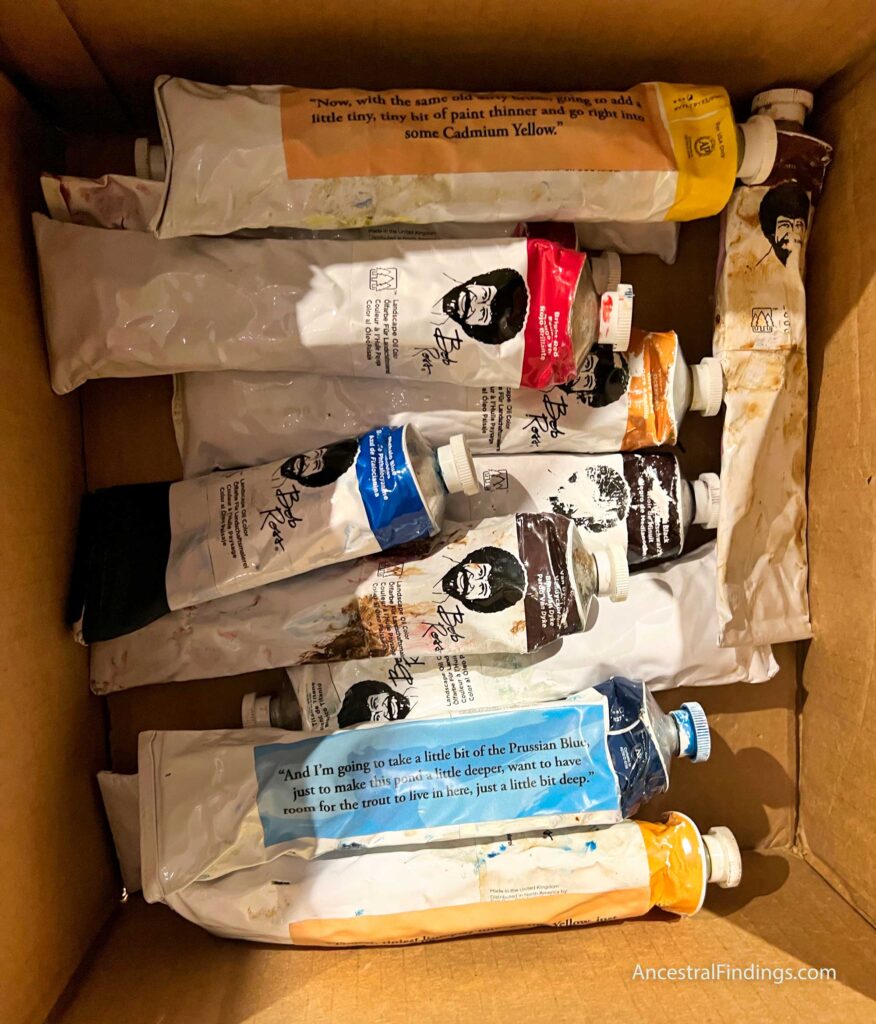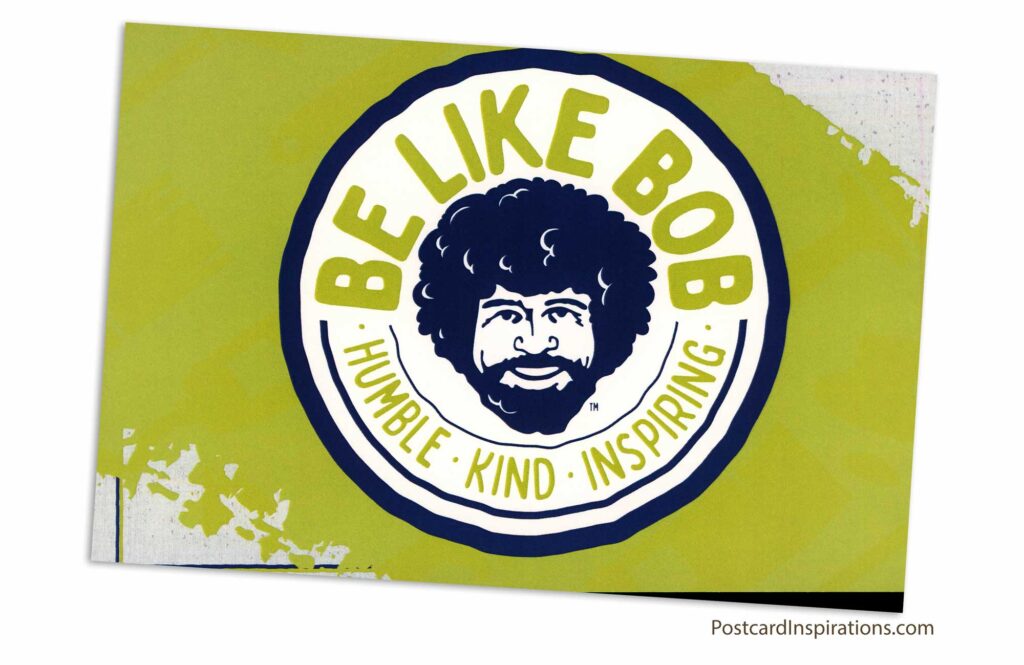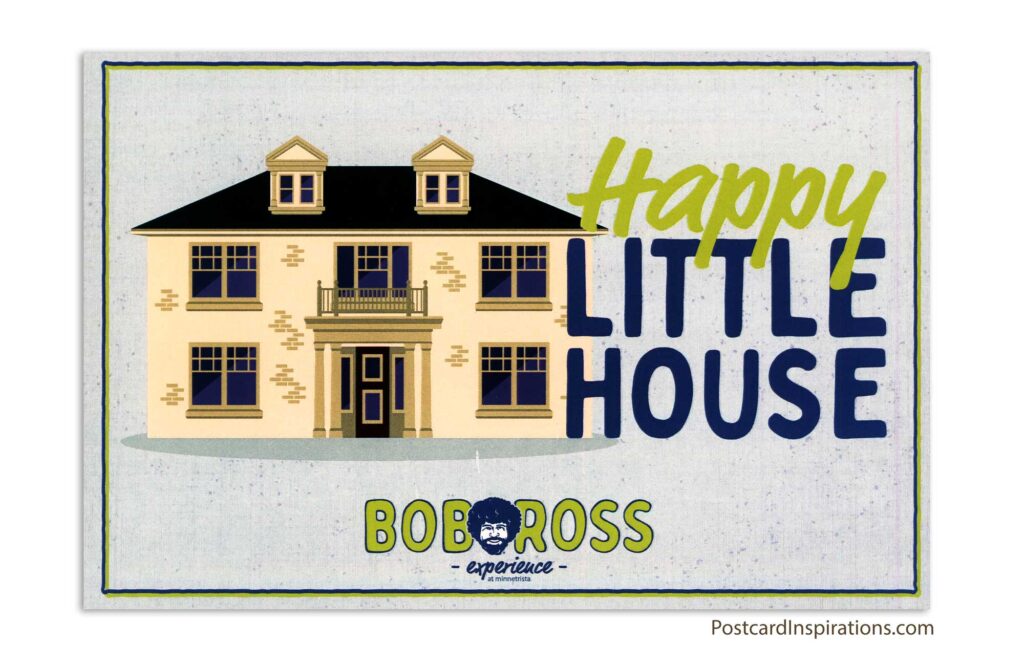Robert Norman “Bob” Ross was born in 1942 in Daytona Beach, Florida. His parents were Jack and Ollie Ross. His dad was a carpenter, and his mom was a waitress. Raised in Orlando, Florida, Bob had one sibling, a half-brother named Jim. As a kid, Bob enjoyed taking care of injured wildlife. He dropped out of high school as a freshman, in only the ninth grade, and went to work as a carpenter with his dad, during which time he had an accident that lost part of his left index finger.
When he was eighteen years old, Bob joined the US Air Force. In the military, he was set to work as a medical records technician and rose to the rank of master sergeant. He also served as the first sergeant at Alaska’s Eielson Air Force Base clinic. Being born and raised in Florida, this stationing was the first time Bob saw snow and mountains. During breaks at his posting in Alaska, Bob began toying around with painting, doing quick portraits of the snow, mountains, and other natural features he was reveling in while in the beautiful wilderness setting.

After leaving the military, Bob adopted his signature soft-spoken voice. He said this was because his roles in the military had required him to be the mean guy, the one who made people scrub latrines and screamed at them for being late to work. He didn’t like doing this and seems to have regarded his military role as a “persona” he had to put on for work there. After leaving the military, he decided not to raise his voice in civilian life.
Bob spent twenty years in the Air Force, during which time his interest in painting was piqued, and he attended an art class at the Anchorage USO club. By the time he took the art class, he had already developed his own quick painting technique and was frustrated with his art instructors, who were much more interested in abstract painting than him. He complained in an interview years later that those instructors would tell the students what made a tree but didn’t tell them how to paint one.

Bob took on a part-time bartending job while in Alaska, and it was on this job he discovered a TV show called The Magic of Oil Painting, hosted by a German painter named Bill Alexander. Bill used a technique from the 1500s called Alla prima (aka, “wet on wet”). It was a quick painting technique that allowed a portrait to be done in about half an hour. Bob studied this technique from the TV show and mastered it.
With his newfound skills, Bob started painting his versions of Alaskan landscapes on novelty gold-mining pans and selling these paintings to locals and tourists. Soon, his income from his art was higher than that of the military. He retired from the Air Force as a master sergeant in 1981 and went home to Florida.

When he settled in Florida again, Bob studied under Bill Alexander in person, joined Bill’s Alexander Magic Art Supplies Company, and became a traveling art supplies salesman and art tutor. A woman named Annette Kowalski attended one of his tutoring sessions in Clearwater, Florida, and convinced Bob he could succeed as an artist on his own without Bill. Bob, his wife, and Annette put their savings together and created Bob’s first art company.
The company struggled at first but soon found its customer base. The company’s success led Bob to be the star of his own TV show, The Joy of Painting, which was filmed at the PBS station studio WIPB in Muncie, Indiana. The exact way the show came about is somewhat of a mystery, as Bob never discussed it, nor did anyone involved with the show.

Unfortunately for Bob, he had permed his hair when he filmed the show’s first episode. He did not like the permed look, which he tried because it was popular then. Despite this, the perm became associated with Bob and his brand, especially after he incorporated the perm into his company logo. Thus, he ultimately kept the perm, despite not personally liking its aesthetic.
The Joy of Painting was on TV in new episodes from 1983 to 1994; it is still shown in re-runs in the United States and many countries globally. The show made Bob a household name. People loved his soft voice, soothing manner, and easy wet-on-wet oil painting technique that he taught his viewers. Each painting was constructed from Bob’s imagination with no sketch, in real-time, on the show.

Bob has been compared to Fred Rogers of Mister Rogers’ Neighborhood, thanks to his soft voice and gentle manner. Bob is essentially the Fred Rogers of the commercial art world.
With Annette Kowalski and her husband Walt, Bob parlayed his TV show into a line of art supplies, recorded art classes, and in-person classes taught by people trained in Bob’s methods. Bob Ross, Inc., the name of the business, became a $15 million dollar company, and ownership of it went to the Kowalskis after Bob crossed to the other side.
Bob painted an estimated, and quite astounding, 30,000 paintings in his lifetime.

As for his personal life, Bob was married three times. His first wife was Vivian Ridge, with whom he had a son, Robert Stephen “Steve” Ross. They divorced in 1977 after twelve years of marriage, allegedly due to Bob’s infidelity. Bob’s second wife, Jane, married him the same year his divorce from Vivian was finalized. Bob and Jane didn’t have any children, and this marriage ended when Jane crossed to the other side in 1992. Bob married a third time to Lynda Brown in 1995, just a couple of months before he himself crossed over.
In addition to his son, Steve, Bob also fathered a child with a girlfriend he had when he was just a teenager.

Bob valued his privacy and was known for being secretive about his personal life. He only gave a small number of interviews during his art career. He wasn’t a member of any particular religion (at least, that he let be known), though he did express a belief in a creator God and often ended episodes of his TV show with a “God bless” wish to his viewers.
Bob was a cigarette smoker for most of his life, beginning young, and expected that this would cross him to the other side when he was still young. He was correct. Though it was not revealed to the public that he was ill until after he crossed, and only a few close friends, family, and associates knew at the time, Bob was diagnosed with lymphoma at some point. It is not known how long he lived with it. He crossed to the other side in 1995 at age fifty-two.

Bob was buried at Woodlawn Memorial Park in Gotha, Florida. A plaque at his grave says, “Bob Ross: Television Artist.” His company is still owned and operated by the Kowalskis today, after wresting the rights to Bob’s likeness from his son and half-brother (to whom he had left it in his will) in court. Under a settlement with the Kowalskis, Steve Ross (a talented painter in his own right who appeared a few times on his dad’s TV show) is allowed to paint and teach painting publicly under his own name without the risk of being sued by the Kowalskis.
Despite the legal disputes between the Kowalskis and Bob’s family, Bob remains a popular cultural figure today, and his TV show is gaining new fans whenever it airs. It can be said with all fairness and sincerity that Bob is one of the most beloved figures in the modern art world.

